Template of letter of recommendation
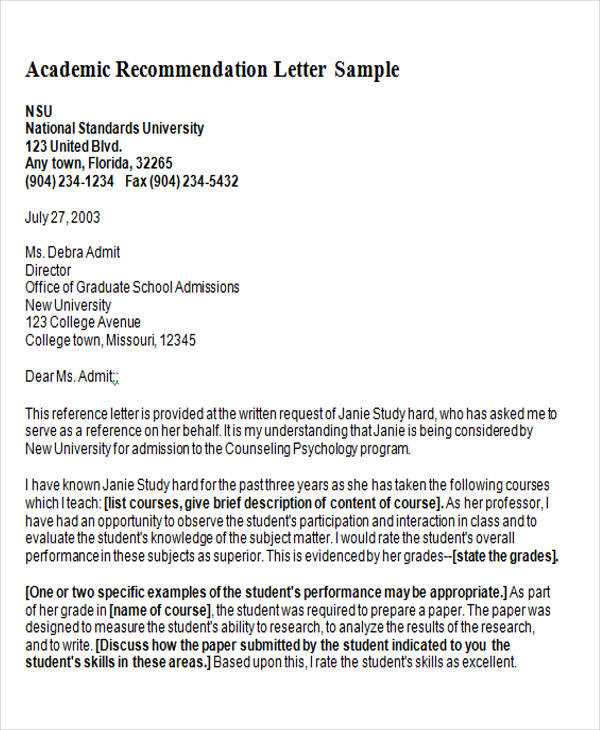
If you need to write a letter of recommendation, begin with a clear statement of your intent. Provide the recipient’s name, their role or capacity, and the specific purpose of the recommendation. Make sure the tone is genuine, but remain focused on the person’s skills and qualities that make them a strong candidate for the opportunity at hand.
Be specific about their qualifications. For example, mention particular accomplishments or characteristics that demonstrate the person’s expertise or work ethic. Avoid generalities, and provide concrete examples. Describe how their contributions positively impacted the team or organization and support these claims with measurable outcomes if possible.
Next, highlight the person’s key strengths and why those qualities make them a standout choice. This could include their leadership abilities, problem-solving skills, or dedication to continuous improvement. Address what makes them unique in the context of the position or program they are applying for.
Conclude the letter by expressing your confidence in their ability to succeed. Offer to provide further information if needed, and make it clear that you are fully supportive of their application. Be sure to thank the reader for their time and consideration, keeping the closing professional yet warm.
Template of Letter of Recommendation
For anyone writing a letter of recommendation, clarity and precision are key. A well-structured letter will allow the reader to quickly grasp the candidate’s qualifications and personal strengths. Below is a template that highlights the critical sections you should include.
Introduction and Purpose
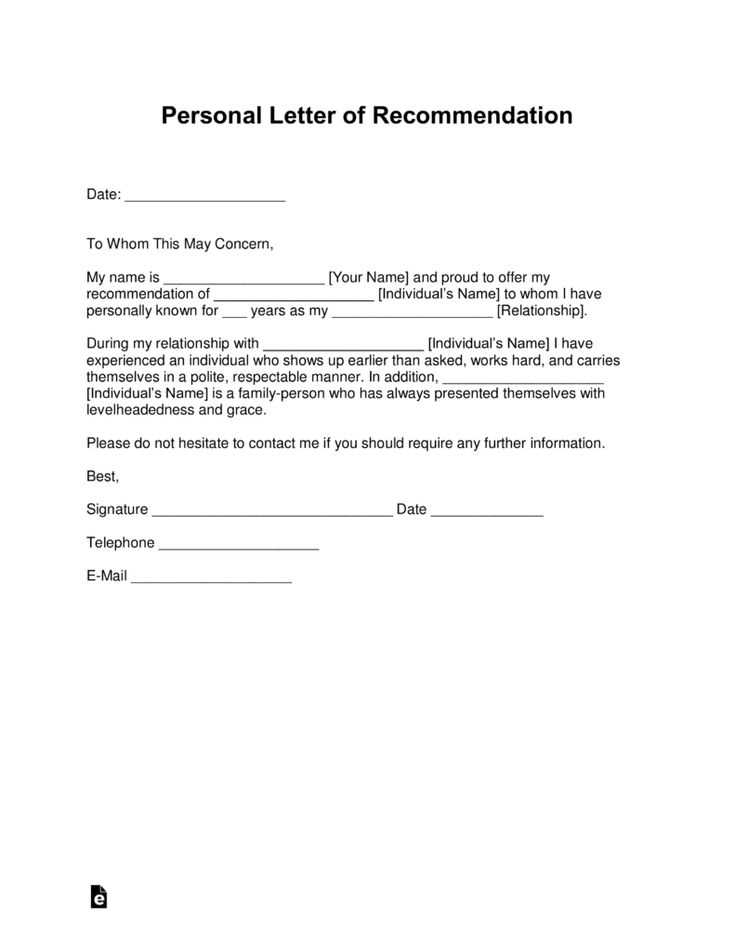
Begin by stating the purpose of the letter. Clearly mention your relationship with the person you are recommending and how long you’ve known them. Provide context about the nature of your association–whether as a supervisor, colleague, or mentor. This helps the reader understand your perspective and authority in making the recommendation.
Key Strengths and Achievements
Focus on the individual’s strengths, skills, and achievements. Be specific and provide examples of how they have excelled in their role. For instance, mention any projects they have successfully managed, their ability to lead or collaborate, or particular expertise they have developed. Concrete evidence of their capabilities will strengthen your recommendation.
Example: “John consistently delivered outstanding results in every project he managed. His ability to tackle complex challenges and deliver high-quality work under tight deadlines made him an invaluable asset to our team.”
Make sure to mention any personal qualities that make them a good fit for the opportunity they are applying for, such as work ethic, reliability, or problem-solving skills.
Conclusion and Final Recommendation
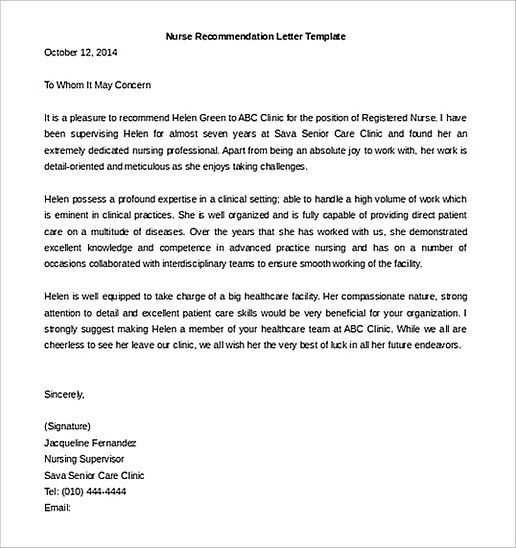
End the letter by offering a clear endorsement. State that you believe the candidate will succeed in the role or endeavor they are pursuing. If appropriate, invite the reader to contact you for more information.
Example: “I have no hesitation in recommending Sarah for this position. Her dedication and expertise will make her an excellent addition to your team. Please feel free to reach out if you have any questions.”
By following this structure, your letter will present a well-rounded, compelling argument in favor of the candidate’s qualifications and character.
Choosing the Right Tone for the Recommendation
Adjust the tone based on the nature of the position or role the individual is applying for. For professional roles, use a respectful yet confident tone. Highlight the candidate’s skills and achievements without sounding too informal. Maintain balance–be precise about their strengths and capabilities while keeping the language clear and straightforward.
Formal and Professional Recommendations
When writing for a formal setting, such as a job or academic position, focus on objectivity. Avoid overly personal or emotional language. Stick to facts and concrete examples that illustrate the candidate’s qualifications. This approach conveys reliability and professionalism, which is highly valued in these settings.
Personal and Enthusiastic Recommendations
For more personal settings, like a character reference or volunteer role, a warmer tone is appropriate. Express genuine enthusiasm and highlight personal traits like kindness, determination, or reliability. This creates a compelling picture of the candidate’s character, showing why they would be a good fit for the opportunity. Keep the tone friendly, but remain respectful and clear.
Identifying Key Strengths to Highlight
Focus on specific attributes that clearly showcase the individual’s value. Highlight qualities that directly relate to the role or program they are applying for. Avoid generic traits; instead, choose strengths that demonstrate unique capabilities and accomplishments.
Focus on Impactful Achievements
Instead of listing characteristics like “hardworking” or “dedicated,” emphasize real contributions. Discuss how the candidate’s actions led to positive outcomes, whether through successful projects, problem-solving abilities, or leadership in challenging situations. Be clear about how these achievements benefited the team or company.
Demonstrate Soft Skills with Examples
Soft skills like communication, teamwork, and adaptability are crucial. Highlight instances where the candidate successfully navigated difficult situations, communicated effectively with peers or clients, or adapted to changes in the workplace. Concrete examples of these abilities will provide a more complete picture of their potential.
Providing Specific Examples of Achievements
One of the best ways to showcase a candidate’s potential is by offering clear examples of their accomplishments. Specific instances not only highlight their abilities but also demonstrate their impact. For instance, instead of simply stating that someone is “a great leader,” provide a concrete example of a project they managed successfully, outlining the results and their role in achieving them.
- Describe a time when the candidate improved a process or system. For example, “He streamlined the inventory management process, reducing errors by 30% and saving the company significant time.”
- Share how the individual contributed to a team goal. “She led a team of five to complete a marketing campaign that exceeded its target by 25%.”
- Provide numbers or metrics to reinforce the candidate’s achievements. “He increased sales by 15% in six months, contributing an additional $100,000 to the company’s revenue.”
- Highlight a unique skill that made a difference. “Her ability to analyze data helped our team make informed decisions, improving project efficiency by 20%.”
Including these examples makes the letter not only more persuasive but also paints a vivid picture of how the individual can contribute in future roles. Always aim to show, not just tell, the candidate’s strengths.
How to Tailor the Letter for Different Purposes
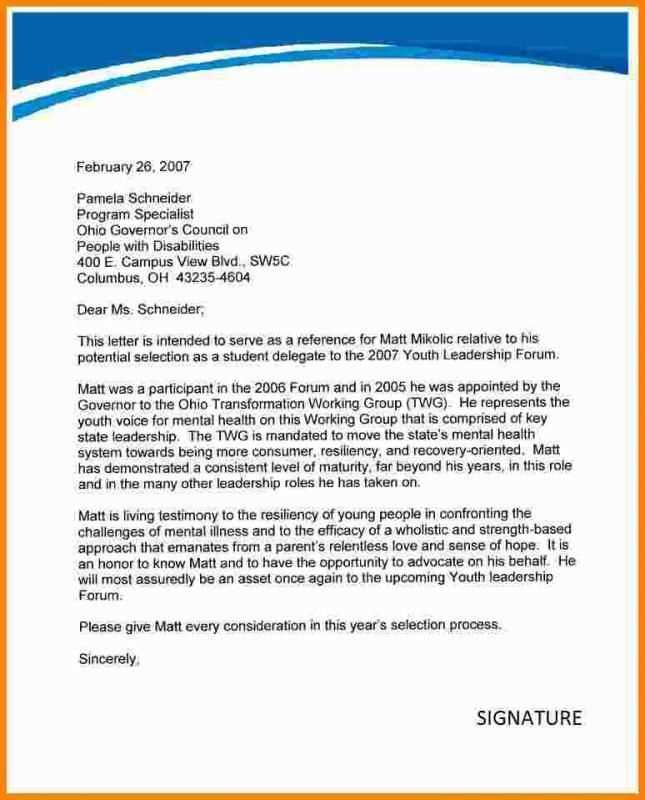
Each type of recommendation letter requires a specific approach. Whether it’s for a job application, university admission, or personal reference, the content should align with the recipient’s expectations and the purpose of the letter.
For job applications, focus on the candidate’s professional skills, achievements, and qualities that are directly relevant to the position. Highlight experiences that demonstrate their ability to succeed in the specific role. Keep the tone formal, but personal enough to reflect the candidate’s unique strengths.
In a letter for academic purposes, such as university applications, emphasize the candidate’s intellectual capabilities, work ethic, and potential to succeed in a rigorous academic environment. Discuss specific academic accomplishments and provide examples of how the candidate has contributed to the academic community.
Personal references, on the other hand, require a more casual tone, but should still be sincere. Focus on the candidate’s character, work ethic, and reliability. Highlight personal experiences that demonstrate their commitment, trustworthiness, and ability to engage with others.
| Purpose | Focus Areas | Tone |
|---|---|---|
| Job Application | Professional skills, achievements, role-specific experience | Formal, focused |
| University Admission | Academic strengths, intellectual potential, academic contributions | Formal, supportive |
| Personal Reference | Character, reliability, personal experiences | Casual, sincere |
Adjusting your tone and emphasis for each situation ensures the letter effectively serves its purpose while providing a clear, tailored view of the candidate’s suitability.
Final Steps: Closing and Signature Tips
End the letter with a polite and formal closing. Use phrases like “Sincerely,” “Best regards,” or “Kind regards.” Avoid overly casual expressions. Position the closing just above your signature line, ensuring there is enough space for the signature to stand out clearly.
Formatting Your Signature
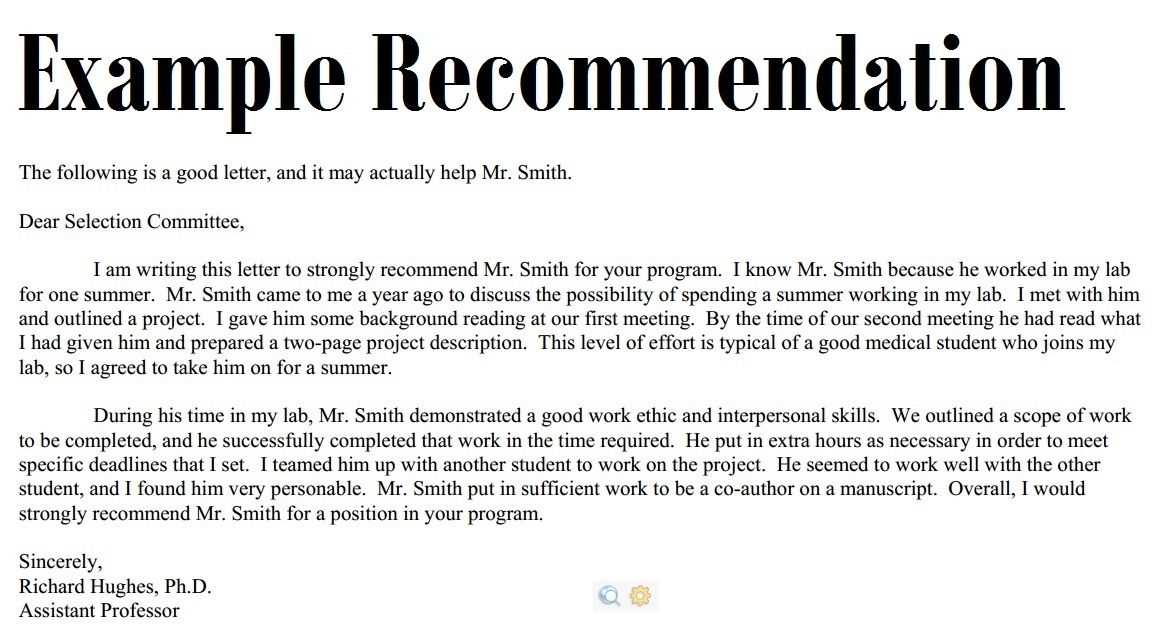
Leave enough room between the closing phrase and your typed name for a handwritten signature. This enhances the personal touch and adds formality to the document. If sending electronically, a scanned signature is acceptable, but make sure it’s clear and professional.
Additional Considerations
If the letter is to be sent on behalf of an organization, include your job title and company name under your signature. This provides context for the person reading the letter and adds credibility. Ensure all contact information is accurate and up to date.